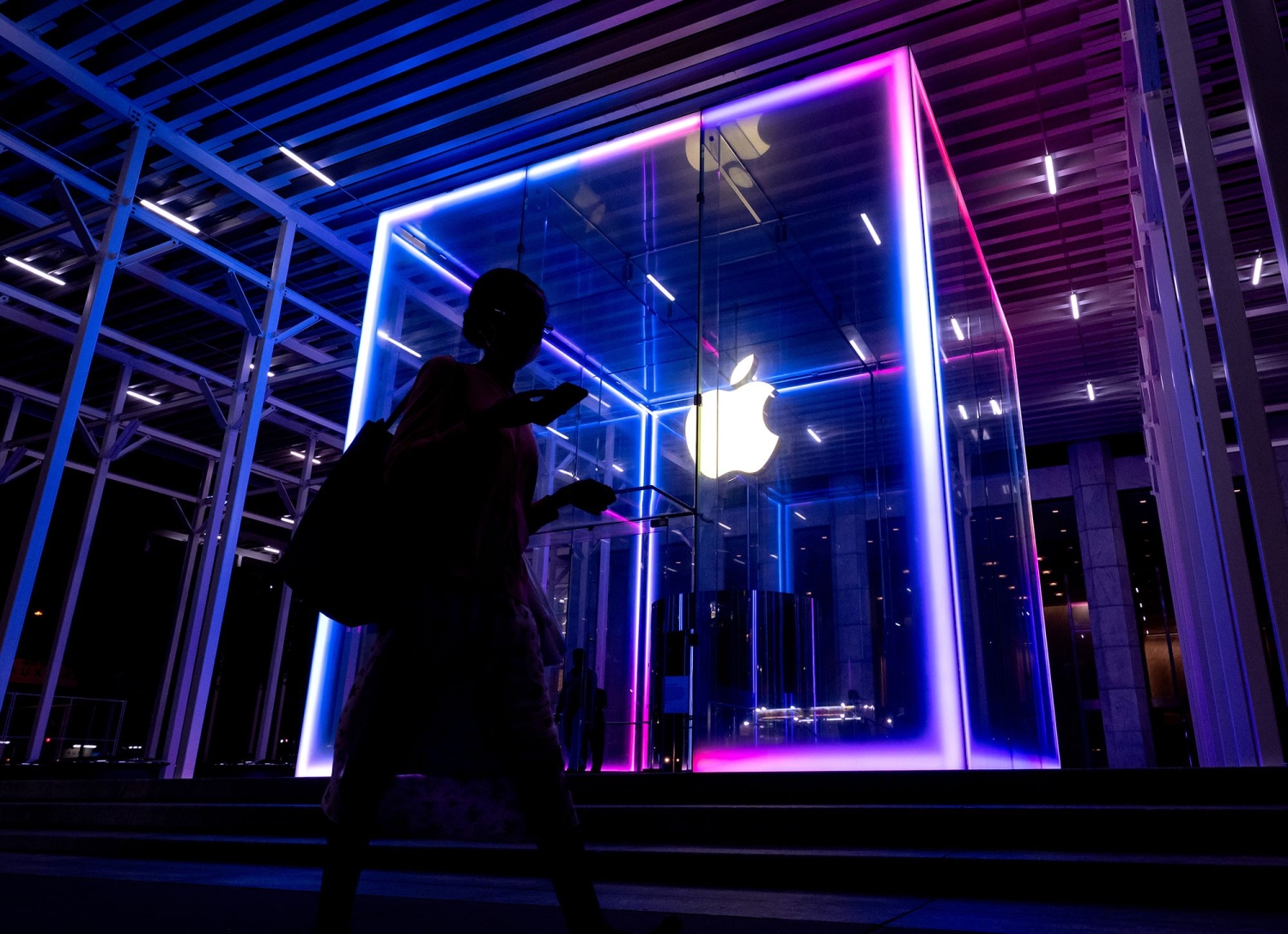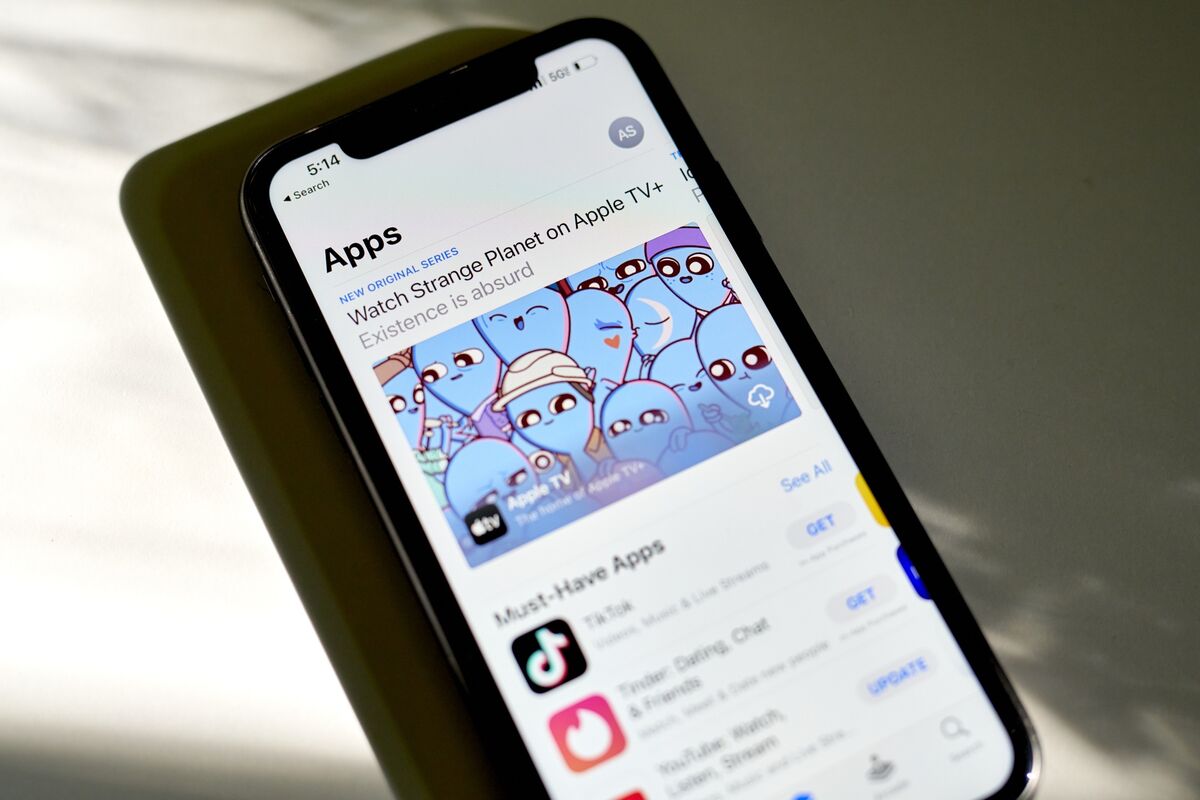
This article is more than
2 year old
Apple’s European Union revamp of the App Store and iOS gave us a glimpse at a less hostile and more open future for the iPhone — even if it’s an outcome the company never really wanted. Also: Apple scales back its future electric car; Samsung considers developing a noninvasive blood sugar monitor; and new iPad and MacBook Air models get closer to release.
Last week in Power On: Apple’s testy developer relationships threaten to hamper the launch of the Vision Pro.
The Starters

Apple Inc.’s sweeping overhaul of its iPhone software, App Store and Safari browser in the European Union is more than just a local change. It’s a peek at the future of the platform and one that the company will likely have to adopt globally.
The revamp will satisfy many longstanding requests from users, developers and regulators. Apple will start allowing third-party app marketplaces, alternative in-app payment options and all-in-one game streaming services. Outside companies also will be able to create tap-to-pay apps, and it will be easier for users to change their default browser.
It all adds up to an iPhone that’s more customizable and less hostile to outside software. But the changes aren’t without controversy. A new approach to commissions — the cut that Apple charges third-party app developers — has the potential spark a fresh fight with companies like Spotify Technology SA and Meta Platforms Inc. And it’s bound to create new winners and losers.
The reforms also were undercut by the fact that Apple didn’t really want to make them. Apple was forced to enact many of the changes in response to the EU’s Digital Markets Act, which imposes tough new restrictions on tech giants starting in March.
Publicly, Apple’s argument against the changes hinges on concerns about privacy and security loopholes. And it’s clear Apple is taking that seriously. As it frees up the iPhone’s software, the company is rolling out a slew of new anti-malware tools and warnings for both consumers and developers. It’s even requiring apps downloaded outside its App Store to go through a light review process and notarization.
But much of Apple’s reluctance stems from its loss of control and potential impact on revenue. Here are two examples of how the DMA threatens Apple’s services business, including an App Store operation that generates more than $20 billion a quarter:
By allowing third-party app marketplaces and in-app payment systems, Apple’s longstanding commission on outside software — 15% to 30% of transactions — is beginning to crumble. From a control standpoint, Apple has less ability to maintain a consistent customer experience when people are using its platform.
The company also has been counting on revenue from Apple Pay transactions (via its tap-to-pay feature) at retail stores. It’s no secret that Apple gets a small cut from credit card companies and banks for these transactions, so allowing third-party apps to create their own tap-to-pay services undermines the stronghold Apple currently enjoys on the iPhone.
That’s why Apple has taken a creative approach to complying with the DMA — in a way that is already irking some developers.
The EU regulators made it clear to Apple that they want the company to lower the commissions it takes from developers. It also was clear that Apple needed to allow third-party billing services and app stores.
Here’s the part that developers will probably like:
Under the new EU terms, the 15% cut that Apple takes from developers who made less than $1 million in the prior year (this is part of a recent “small-business program”) drops down to 10%. That number also applies to subscriptions that have been in place for a year.
For developers that generate more than $1 million — and for subscriptions still in their first year — the commission will be 17%, a major discount compared with the typical 30%.
That approach alone may inspire developers to stick with the Apple ecosystem, rather than join a future iPhone App Store from Microsoft Corp., Meta or someone else.
But to make up for those reductions, Apple is implementing two new fees:
Apple now has an in-app purchase billing fee of 3% — on top of the new 10% and 17% commissions. But that doesn’t apply if developers use an outside payment processor.
Perhaps most notably, there’s a new “core technology” fee. That requires developers to pay Apple €0.50 for each new app install, each year, over a threshold of 1 million installations. This includes installations — and new version updates — via Apple’s App Store, third-party stores, the web or the TestFlight testing service. (Half a euro is currently about 54 US cents.)
Altogether, Apple says that 99% of developers will see the amount they pay stay the same or decline. That all sounds great until you dive into the core technology fee, which feels like it was designed to strike right at Spotify, Meta and other large developers that offer their apps for free.
Since the beginning of the App Store, makers of free software weren’t required to pay anything. It was a core tenet that even led Apple to briefly bar “freemium” applications (free downloads with paid in-app upgrades). Now, these kinds of free apps will have to pay Apple. Let’s say Meta’s Instagram gets 50 million installs a year in the EU. That’s about $2.2 million per month in fees to Apple that the company previously never had to pay.
On Friday, Spotify Chief Executive Officer Daniel Ek called this “an untenable situation.”
“We have to pay on every install or update to our free or paid app, even for those who no longer use the service,” he said on the X social network. “So where does that leave us? Under the new terms, we cannot afford these fees if we want to be a profitable company, so our only option is to stick with the status quo. The very thing we’ve been fighting against for five years.”
While the policy is clearly aimed at the world’s biggest app makers, it’s the indie developers who may suffer the most. Meta can handle writing Apple a check for $25 million a year — even if the company won’t like it — given how much ad revenue it generates. But if small-time developers suddenly see their free or low-cost apps explode in popularity, they could face a rude awakening.
Here’s one example from developer Steven Troughton-Smith: A free app that gets 2 million installs will have to pay Apple about $500,000 per year. “I don’t think any app developer with free or freemium apps in their portfolio can accept Apple’s new business terms without the risk of being bankrupted,” he wrote on Mastodon. “And as a result, that makes this specific implementation of the core technology fee unworkable.”
My belief is that the bigger developers will raise concerns about this fee to the EU and the regulators will pressure Apple to scrap it. I don’t expect Apple to give in easily, but there are two possible compromises. The company could raise the threshold from 1 million annual installs to, say, 5 million or 10 million. Or it could remove the fee for developers in the small-business program.
One developer who had a few hundred thousand app installations last year told Power On that there wouldn’t be an incentive to make an app under these terms.
But developers don’t have to. They can just stick with the old 15%-30% fee structure if they want. Those developers just have to agree not to use third-party payment systems or app stores, and embrace the status quo instead — which is just what Apple would have preferred from the start.
The Bench

Apple’s electric vehicle gets delayed (again) and becomes more like a Tesla. Besides the developments out of the European Union, the biggest Apple news of the week was my update on its long-in-the-works EV endeavor. I don’t need to reiterate how much of a mess the project is — let’s just say it kicked off 10 years ago and has had at least four different bosses, multiple rounds of layoffs and several strategy shifts.
So, here’s the latest: Apple is scaling back plans for a Level 4 self-driving system to Level 2+ technology, and it’s delaying the release from 2026 to around 2028.
Why the change? Apple clearly realized it had no chance of finishing a truly self-driving car this decade. The only solution was to do what everyone else in the space has done: offer a vehicle with pretty good autonomy on highways — with the need for a driver to still pay attention and take over at any time. Apple also made the launch target a bit more realistic.
Now, here’s where things get really interesting. I’m told that Apple’s board has gotten deeply involved — to the point of having frenzied meetings with executives, including current project chief Kevin Lynch. It’s a pivotal moment: People at Apple believe that if the latest strategy shift doesn’t pan out, the car team could be disbanded. Given the billions of dollars invested in this project, no one is looking forward to that.

Samsung wants to be a lot like Apple in digital health care. I had an interesting interview last week with the head of mobile health technology for Samsung Electronics Co. It turns out Apple isn’t alone in developing ambitious new health features for its devices. Samsung is working on noninvasive glucose monitoring and continuous hypertension checking — two holy grails in the health industry. Earlier this month, Samsung also announced extensive sleep tracking and sleep apnea detection for its latest watches. If you are a dedicated Power On reader, that should all sound familiar: Apple is working on these kinds of features as well. The race is on.

Apple’s next MacBook Airs and iPads get closer to release. Back in December, I reported that Apple had pretty extensive plans for March: There will be several new iPads, alongside the next batch of Macs with M3 chips. More specifically, you should expect the biggest revamp ever for the iPad Pro, a refreshed iPad Air, a larger iPad Air, and 13-inch and 15-inch MacBook Airs with M3 processors.
The latest: I’m told these machines are likely to come out around the end of March — and that the new iPad Pros and 13-inch MacBook Air are already deep in production overseas. The first beta version of iOS 17.4 has also given us a few additional clues. It references some new iPad accessories — there are fresh Magic Keyboards and Apple Pencils on the way — in addition to a possible landscape Face ID camera on the new iPad Pros. That last item has been on users’ wish lists for a long time.
The Schedule

Feb. 1: Apple’s holiday quarter results. Get ready for the company’s most important earnings report in a while, coming on the eve of the Vision Pro release. Investors and analysts aren’t expecting fireworks: Apple has warned that revenue will be flat in the quarter following its longest sales slump in decades. If the company does manage to eke out growth, it would be the first revenue increase in a year. The iPhone, Apple’s biggest moneymaker, is contending with a lingering smartphone slump — though it could benefit from new features and the resolution of supply chain snags. In any case, Wall Street will be keeping a close eye on results out of China, where government bans of foreign technology have sparked concerns.
Q: If I get my Apple Watch replaced through AppleCare, will the new hardware still have the blood oxygen feature?
Q: What else is new in iOS 17.4?
Q: What should we expect in iOS 18?